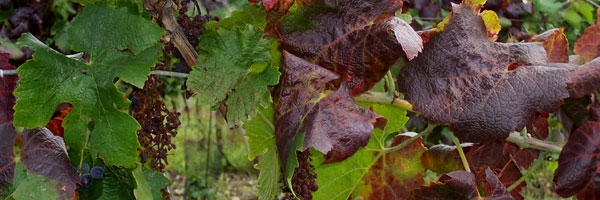
" Candidatus Phytoplasma solani"...
Stolbur phytoplasmas - black wood
The stolbur is widely distributed throughout the Mediterranean basin. It is detected from Portugal to Iran, and from Germany to the Near East. All European vineyards are affected by the black wood disease which is a yellowing of the grapevines, not contagious to the vineyard, and which owes its name to the unhardened woods which blacken when they are subject to the effects of frost. Its incidence from one year to the next on the grapevinevine is variable. Warm years are considered favorable for the expression of black wood and its propagation. The symptoms of black wood are identical to those caused by the phytoplasma of flavescence dorée of the grapevine, only a molecular diagnosis can distinguish them.
This disease is caused by a small, wallless bacteria of the Mollicutes class calledgrapeviness the stolbur phytoplasma - blackwood. It is transmitted by lightning leafhoppers of the Cixides family. The main vector in grapevine is Hyalesthes obsoletus , which accidentally transmits the phytoplasma to it during early summer when adults fly away from their reservoir host plants such as bindweed and nettle. The absence of the vector's reproductive cycle on the grapevine makes insecticide treatments ineffective and therefore unnecessary. The best prevention is to eliminate reservoir plants around the plots. Transmission by grafting or multiplication of infected wood is also a route of dissemination of the disease.
At the present time, about fifty different genotypes of Stolbur - blackwood phytoplasma have been identified, but no particular genotype-host plant association makes it possible to define a pathotype.
This stolbur phytoplasma is classified as a quarantine pest on the potato.
Classification : Bacteria; Tenericutes; Mollicutes; Acholeplasmatales; Incertaesedis; " Candidatus Phytoplasma"; 16SrXII group (Stolburgroup), 16SrXII-A subgroup.





